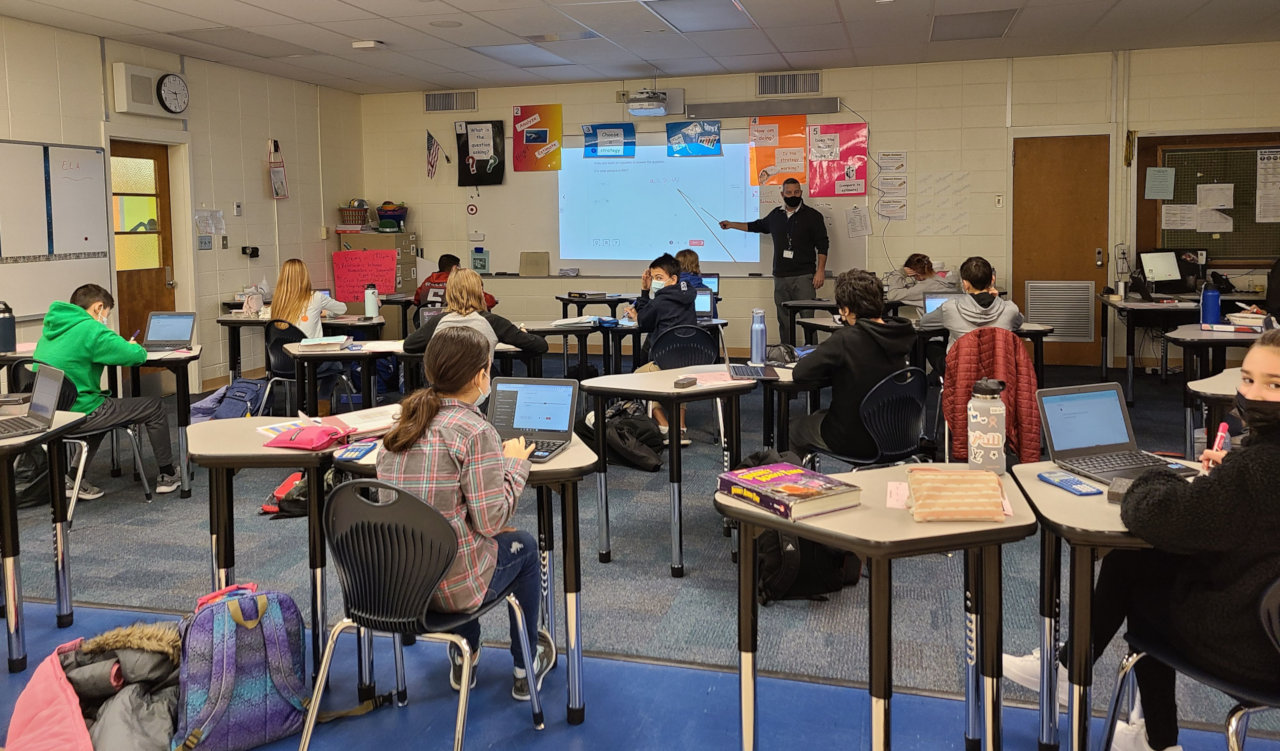Creative Ways to Engage Young Students Remotely
Teachers are creative by nature, and never has this been more evident than since Covid-19 closed down schools last March.

Teachers are creative by nature, and never has this been more evident than since Covid-19 closed down schools last March.
At Linwood Public Schools in Atlantic County in Southern New Jersey, a K-8 district with approximately 810 students, teachers tapped their ingenuity to ensure they were reaching even the youngest students remotely.
“When we had to adjust for Covid, our educators jumped in and made interactive experiences using graphics programs to look like their classrooms,” says Frank Pileiro, Supervisor of Technology. “In this ‘classroom,’ they included avatars of themselves, as well as items relating to topics of the lessons or each subject. This was particularly effective in our elementary school to keep the students connected and engaged.
“They did the same for parents for our virtual back-to-school nights,” continues Pileiro. “We also created a virtual wellness day for our staff. We invited speakers, yoga teachers, and meditation leaders to engage our teachers and support staff in virtual meeting rooms.”

Expanding to Hybrid Classrooms
Finding quality edtech solutions was key to supporting these creative ideas as the district moved from remote to hybrid learning environments.
“One of the most important tech additions to make this new normal a success has been our new communication tech and audio conferencing solutions,” Pileiro reports. “The Nureva HDL300 system has been a great addition to our efforts to bring the classroom to our students, whether they are at home or in the school building.”
The Nureva system, designed for classrooms, captures the audio of everything happening in the classroom so students at home can clearly hear what the teacher and in-person students are saying during class. Teachers can stand and walk around, and in-class students can communicate with students learning from home, who can hear everything without any feedback or delay. The system installs on the wall in minutes, and its plug-and-play connectivity and auto-calibration makes setup simple.
“From my perspective, it was a breeze to install and set up,” says Pileiro. “The system helped with lesson delivery tremendously. The audio quality coming out of the speaker made it sound like the students at home were in the classroom. Also, the microphone array did an excellent job picking up all areas of the learning environment. The included remote control made it very easy to control the connection and audio volume. The teacher could walk around the classroom and still control volume and mute. The light on the front of the device let the teacher know if they were connected or muted. Nureva made what could be a stressful situation less stressful since it just works.”
The teacher who piloted the system agrees.
“I have a pretty large room, and I am not one to stand in one place,” says seventh-grade math teacher, Chris Meade. “For me, the ability to wander around and circulate in my classroom, use my whiteboard and not be tied down to a laptop, let me teach in a natural way and helped me engage my students. The audio of class contributions from remote students with those in the room through the Nureva system was so natural—I could hear them clearly, and they could hear me clearly. It was like everyday learning only with surround sound. I was there when Frank installed the system himself. It took less than twenty minutes and we were up and running—very intuitive and simple. It’s definitely a change for the better.”

Pro Tips
“When it comes to hybrid and blended learning, the best tip I can give is to not let it end when this pandemic is over,” says Pileiro. “Students adapted so much better than we expected overall. We should continue to develop and practice these skills so we can use them to enhance instruction and be ready if we have to go through this again.”
Not surprisingly, professional development is key.
“Getting the teachers up to speed with blended and virtual teaching was just the start,” says Pileiro. “To really be meaningful, follow-up training had to take place at the appropriate intervals.”
In addition to employing follow-up professional development, the district curated web-based resources for teachers to access as needed. These included downloadable documents, screencasts, and video playlists on a private website that can access from anywhere.
“Incorporating communication tech is one way to enhance lessons in this new normal, and something that could be used in the future to keep students connected in alternate modes of learning,” says Pileiro. “Tools such as the HDL300 make this easy because it is so simple to set up and use. It frees the teacher from having to be in front of a microphone or speakers.”
Pileiro recommends setting up the classroom video feed to allow teachers to move around the room more freely and not be tethered to a webcam on a computer. This can make blended and virtual instruction feel even more as if everyone's together as one.
Pileiro also offers this word of advice: “Never underestimate your abilities as an instructor, or your students’ ability to adapt, no matter their age. Don't isolate yourselves. Collaborate— ask and give help as much as possible. We are all in this together!”
Tech & Learning Newsletter
Tools and ideas to transform education. Sign up below.
Sascha has nearly two decades of experience as a freelance journalist writing for national magazines, including The Washington Post, LA Times, Christian Science Monitor, National Geographic Traveler, and others. She writes about education, travel and culinary topics.

